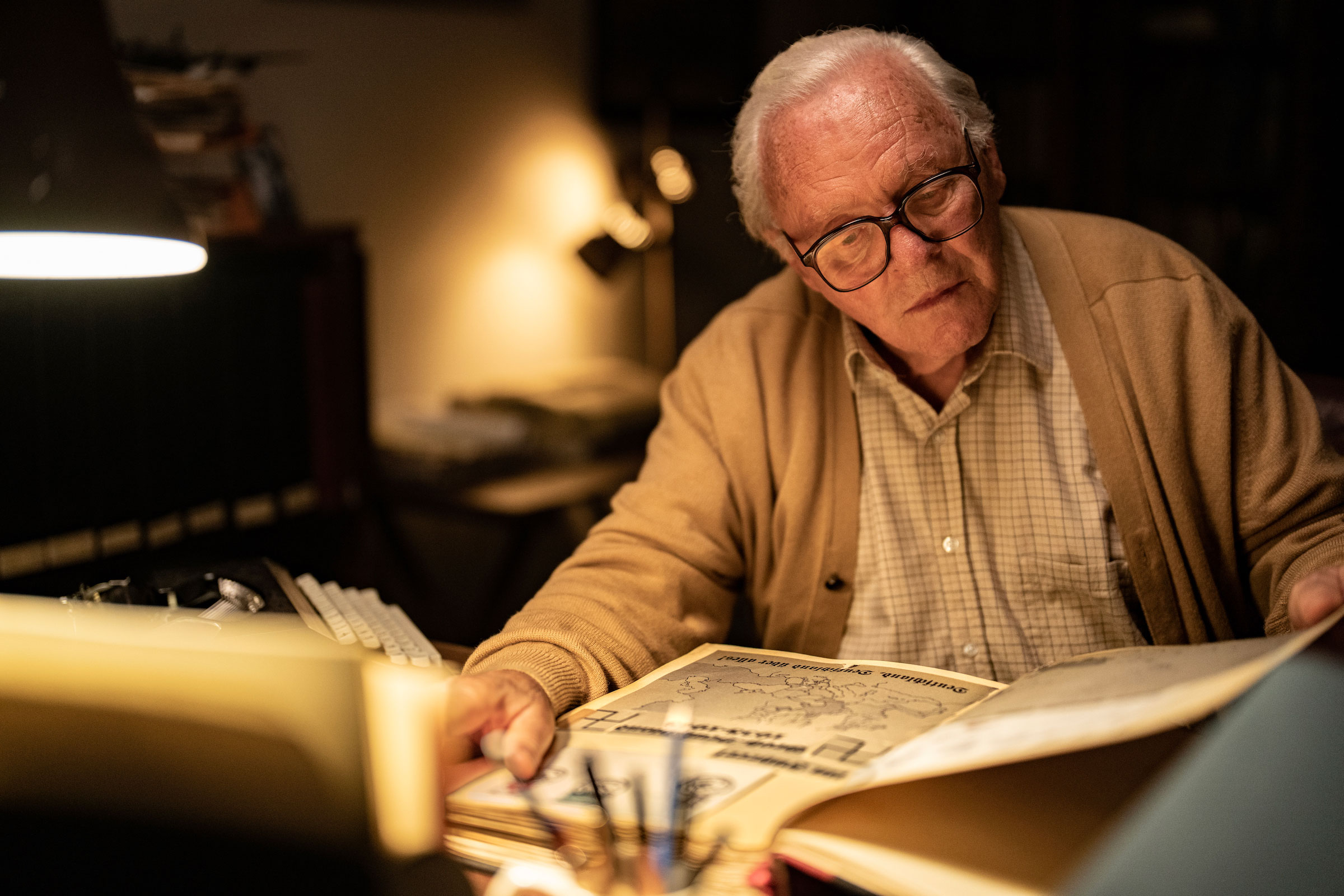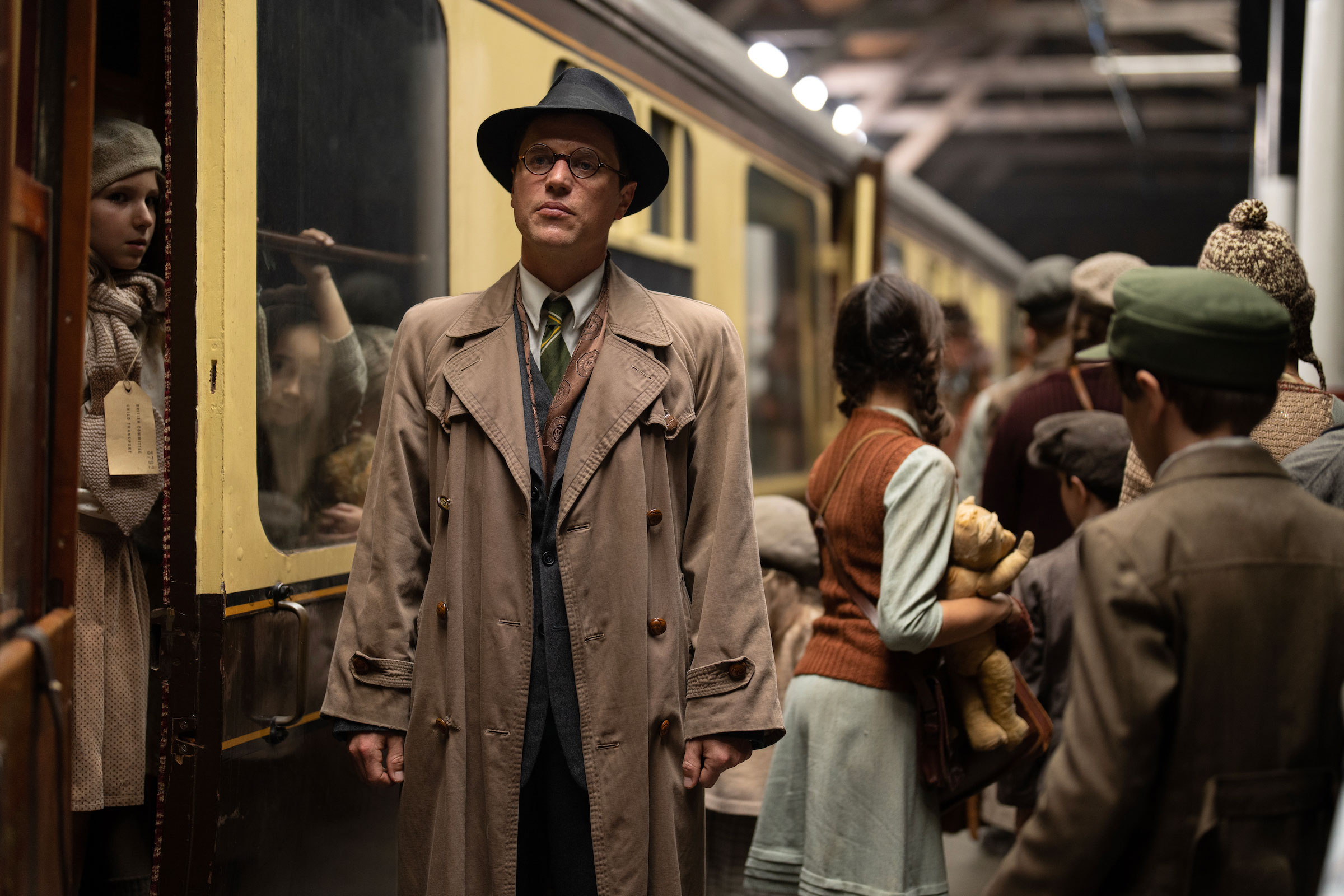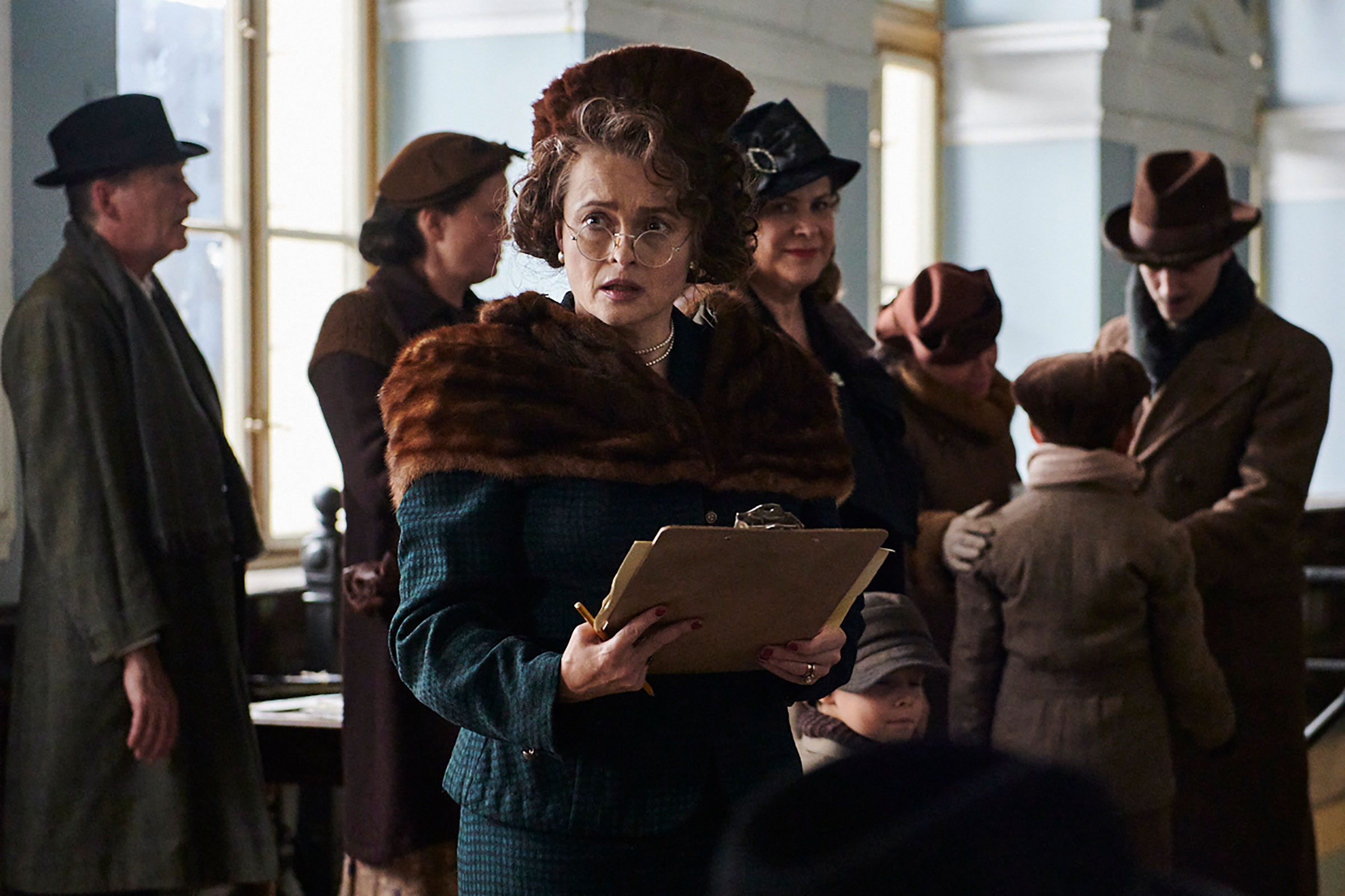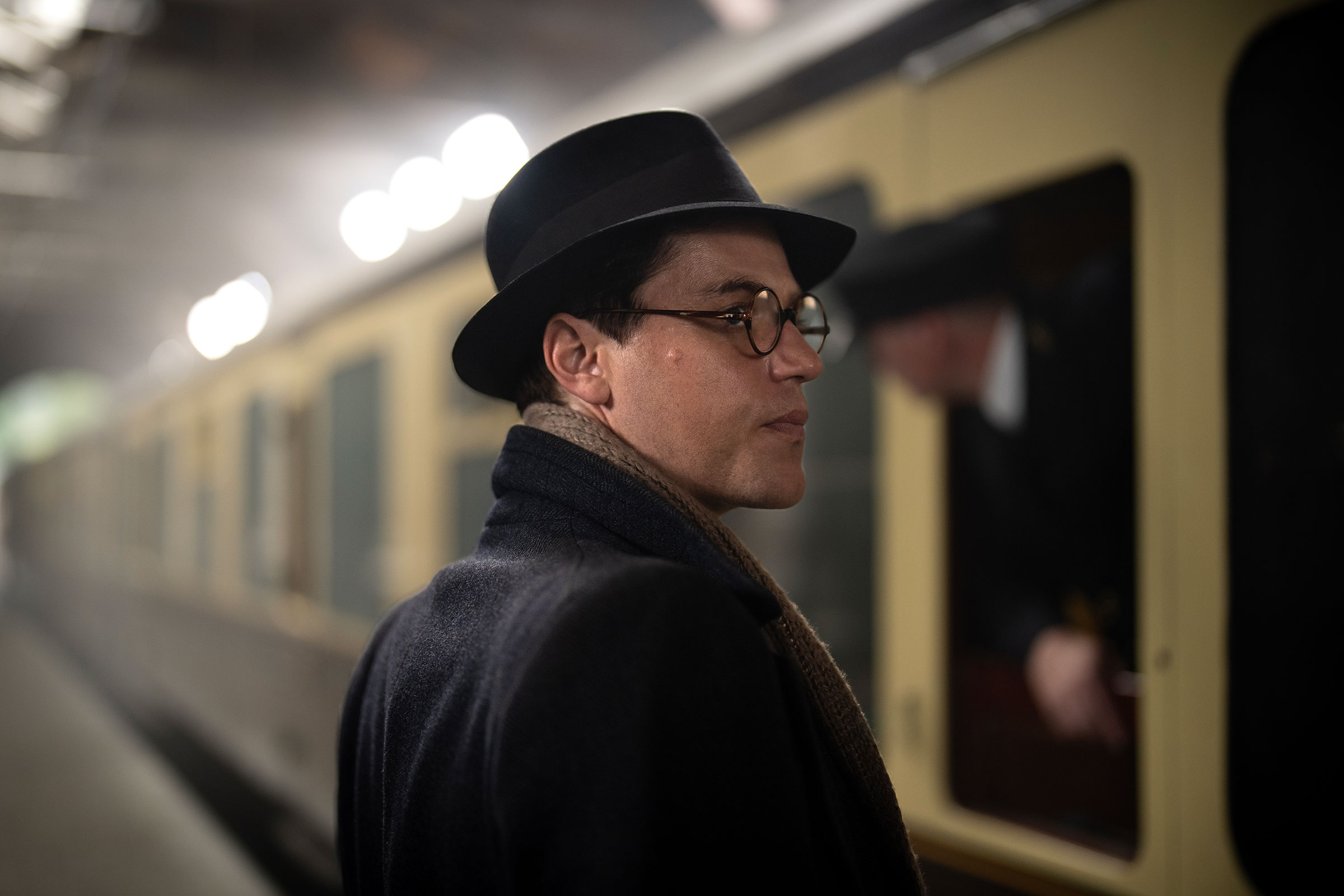Humanitarian Sir Nicholas Winton was no stranger to films about the life-saving work he carried out in the early days of World War II. From The Power of Good (2002) to Nicky’s Family (2011), a number of productions—both documentary and drama—tried to do justice to his remarkable achievement of evacuating 669 Jewish children through Nazi-occupied territories in Europe. This work earned Winton a knighthood from Queen Elizabeth II in 2003. But for almost five decades, the man dubbed the “British Schindler” never spoke about his rescue efforts.
James Hawes’ biopic One Life—releasing nationwide in the U.S. on March 15—is the latest cinematic effort to pay reverence to Winton, following his death at 106 in 2015. “I'm totally drawn by a true story,” Hawes tells TIME of the film’s appeal. “It's got this extraordinary character journey at the heart of it for this man who's got grief and guilt,” he adds.
“I was offered the script three years ago but I couldn’t do it because something else would come up,” Sir Anthony Hopkins tells TIME from his pale yellow suite at The Dorchester in London’s Mayfair. Nicholas Winton’s daughter Barbara Winton had specifically requested that Hopkins play her father in the film. While Barbara’s death in 2022 prevented her from seeing her vision come to fruition, Hopkins says he was moved by the script and eventually signed on to the project.
What happens in One Life?

The film opens in 1987 with Hopkins depicting Winton at retirement age. Winton, residing in Maidenhead and still collecting spare change for a children’s charity, is nudged by his wife Grete (Lena Olin) to declutter his office. The process is less than cathartic for Winton, who is confronted with an old scrapbook from the late 1930s. The artifact documents the humanitarian rescue effort he and other volunteers carried out to evacuate eight trainloads of Jewish children from Prague to the U.K. Winton has spent years plagued by regret over a ninth train that never made it to London.
As the story jumps back in time, 29-year-old Winton, portrayed by Johnny Flynn, is a London stockbroker traveling to Prague for a week to aid refugees. His week-long trip turns into a full-time operation because, as Winton says of the unfolding humanitarian crisis, “I have seen this and I cannot unsee it.” And so, with the help of his mother Barbara Wertheim Tuchman (Helena Bonham Carter) and volunteers on the ground, Winton begins the undertaking of a lifetime to evacuate children from Prague and re-home them with foster families in the U.K.
Characterizing Nicholas Winton

Hopkins, who was 84 at the time of filming, says it wasn’t especially difficult to portray Winton. “When you have a really good script you don't have to do much, you just follow the map,” the Welsh actor says.
Hopkins has taken on a number of vulnerable roles in recent years, including his Oscar-winning role in The Father (2021), in which he plays an elderly man suffering from dementia. He also has a wealth of experience portraying historical figures with complex, well-documented lives to draw from, including Richard Nixon, Pablo Picasso, Alfred Hitchcock, and most recently Sigmund Freud in 2023’s Freud’s Last Session. Winton lived a more private life than all of those men, but the actor says the process for characterizing him was no different.
“All I do is to try and make it sound as if it is happening now,” says Hopkins, noting that he has made a career-long habit of reading his scripts around 200 to 300 times so he can relax into the role. “You can only do that if you know the words, the text, so well,” he insists. This fluency allowed Hopkins to dedicate himself to mastering Winton’s cadence and mannerisms, with the help of archival footage.
Hawes, meanwhile, was focused on creating consistency while directing two men as Winton at opposite ends of his lifetime. “Johnny came to watch Tony working,” recalls Hawes. “You'll see some gestures with their glasses or a thing they do with their eyes, or hesitation or stuttering in the voice occasionally, those are things that Johnny worked at, inspired by what Tony had done.”
The defining traits of Flynn’s Winton are urgency and desperation. But Hopkins portrays the older Winton as full of regret, a man whose perceived failure took precedence over pride in his achievement.
Hopkins says that while he understands an older man dwelling on his mistakes, he himself doesn’t live that way. “I stay grounded in the present. There are things in my past that I'm not proud of but you move on. Life is what it is, you do things,” he says. “We’re all a bunch of sinners. We’re not perfect. But you learn from it.”
The ninth train

In the late 1930s, the British government implemented an emergency rescue operation known as Kindertransport, to bring unaccompanied children from Germany and Austria, most of them Jewish, to safety in England. All told, around 10,000 children were evacuated through the program. Winton was pivotal in persuading the government to expand the program to include Czech children.
With the help of volunteers such as Doreen Warriner and Trevor Chadwick, as well as his mother, Winton was able to evacuate eight trains full of vulnerable children to the U.K. between March and August of 1939. Upon their arrival, he had arranged for foster families to care for them until they were 18, with each family agreeing to pay £50 in guarantee.
As depicted in One Life, a ninth train carrying 250 was due to leave Prague on Sept. 1, 1939, the day Nazi Germany invaded Poland, forcing its borders shut. Instead these children were interned in concentration camps. Only two of them survived World War II.
“A huge amount of it is because he couldn't unsee what he'd seen. He couldn't unknow,” Hawes says of Winton’s pervasive guilt. “All those other kids whose pictures he had, whose names he had, were real people.”
According to Hawes, this is why Winton stayed committed to working with the victims of the Holocaust far beyond the end of the war. “Winton was involved in cataloging and trying to return stuff that had been taken from the Jewish people at the camps. And there were crates and crates of it,” Hawes says. He remained active in anti-war operations and collaborated with the International Refugee Organization.
Read more: Why the Stories of Jewish Women Who Fought the Nazis Remained Hidden for So Long
Appearing on That’s Life!
Winton’s story is an enduring one, not just because of the selfless and dangerous work he and his peers carried out, but because they had a second act when his largely unknown operation became enshrined in a pop culture moment decades later.
In 1988, Winton’s wife Grete told her friend Elisabeth Maxwell, a Holocaust researcher, about the scrapbook of evacuations that Winton led. Maxwell’s husband Robert Maxwell, a media mogul, was drawn to the story and a retelling soon appeared in his tabloid Sunday People. The story made its way to That’s Life!, a consumer affairs programme on the BBC that typically broadcasted lighthearted entertainment.
Winton agreed to appear on the show. Unbeknownst to him, producers had arranged for Vera Gissing—one of the people he saved when she was a child—to sit next to him in the audience. After the two shared an emotional embrace, Winton was invited back on the show for a second segment.
This time, the presenter addressed a full studio audience, saying, "Can I ask, is there anyone in our audience tonight who owes their life to Nicholas Winton? If so, could you stand up please?" Everyone seated in the front five rows stood, as Winton and Grete looked back in awe. The scene has become part of British TV history, and in Hawes’ words, “goes viral twice a year, around the world.”
It is estimated that 6,000 people are alive as a result of Winton’s operation, between the children he directly saved and their descendants. The surviving children who came together in the aftermath of the That’s Life! Episode called themselves “Nicky’s children,” and stayed connected to him until his death.
“Nicky became a lightning rod for these kids, to their unknown families and their past. Most of them had no idea how they came to be in Britain, how they came to be with their foster families,” Hawes says.
Recreating the viral That’s Life moment

The director certainly felt the pressure of creating a scene that has been so widely viewed; one upload has been viewed 42 million times since it was posted 14 years ago. Hawes says it was “terrifying, because you risk people going, ‘Oh, the clip was better.’” But One Life offers viewers the one perspective they haven’t heard before—Winton’s. The camera stays with him, tucked over his shoulder or on the studio floor, capturing his reaction to seeing the people he saved.
The scene appears on screen as charged as its source material, thanks to the heartfelt decision to recreate a studio audience with descendents of the children Winton saved rather than extras. “It was unbelievably powerful. You feel a responsibility as a director in those circumstances, because you want to be respectful of the story, of them and their parents and grandparents, who took the decision to send their kids away,” Hawes recalls.
The scene also had a lasting effect on Hopkins, who said filming it was a “unique experience” for him as someone whose earliest memories include footage of the atrocities of World War II. “I was a boy and I saw those images in the cinemas of walking skeletons,” Hopkins says. “I look back and I think, how could we have done that? We’re all red in tooth and claw.”
Present-day resonance

When Hawes and his team visited the Czech Republic ahead of filming, they were all gathered around the statue of Winton that lives on a platform in Prague Central Station. As they marveled and took photographs, they became aware of radio chatter, police presence, and frantic crowds, followed by the arrival of a trainload of refugees arriving from Ukraine.
“There it is, repeating itself in reverse,” Hawes said, also acknowledging that the story is reaching audiences as thousands of children have been killed in Israel’s ongoing bombardment of Gaza. “Nicky was really strident and powerful about what he did because it was the right thing to do,” says Hawes. “What he did was not about the ethnicity or religion or politics of the people. He was saving children of all faiths and none,” he adds.
Hawes hopes to challenge the common tendency to flatten refugees into faceless monolith, rather than acknowledging their individual experiences. He also hopes the film, through fictional characters like Hana, a Czech volunteer, reminds people that for every international ally who gets name recognition, there are many historically overlooked citizens who work to help their own communities.
But above all else, Hawes’ message echoes that of Winton: “If there's some lesson to come out of [One Life] about the equality of humanity and about the value of every kid,” he concludes, “that's what I want people to take away.”
"behind" - Google News
March 15, 2024 at 11:41PM
https://ift.tt/3rMftL8
The True Story Behind One Life and Nicholas Winton | TIME - TIME
"behind" - Google News
https://ift.tt/eulkqE4
https://ift.tt/n0zikFg
Bagikan Berita Ini














0 Response to "The True Story Behind One Life and Nicholas Winton | TIME - TIME"
Post a Comment